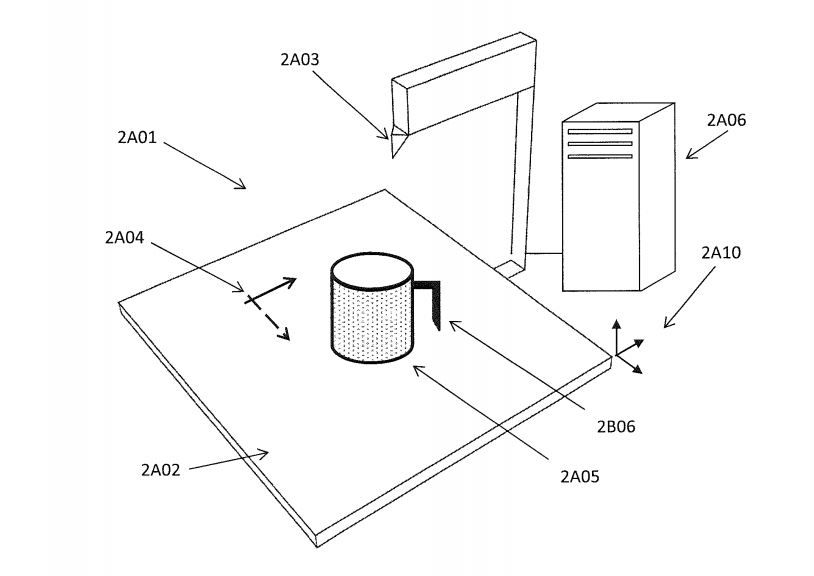
I’m reading a story on a new patent Apple just received and I can’t figure out what they will do with it.
The patent, US 9776364, has this abstract:
Method for instructing a 3D printing system comprising a 3D printer and 3D printing system
A method for instructing a 3D printing system that includes a 3D printer provided with a printing coordinate system to print at least one first object onto an existing second object comprises providing or receiving at least one image representing at least a part of the existing second object, determining or receiving an alignment between at least part of the at least one first object and at least part of the existing second object, determining a pose of the existing second object relative to the printing coordinate system according to the at least one image, and providing the 3D printing system with the pose and the alignment for the 3D printer to print at least part of the at least one first object onto the existing second object according to the pose and the alignment.
I bet you’ve never read a 135 word sentence before? Here’s what I think this means. The patent itself is over 13,000 words.
It seems to be a way to generate and print a 3D model based on a single image observation of an object, with intention to “fit” the newly generated 3D model on top of, or attached to, the imaged subject.
There’s a bit more to this. They explain:
The inventors found that there may exist a need for further applications of a 3D printer, such as extending an existing real object through printing additional objects onto a surface of the existing object by using a 3D printer. One challenge in such applications may be where to place the existing object or how to adjust one or more print heads of the printer such that the additional objects will be printed onto a desired area of the surface of the existing object in order to build a composed object satisfying a pre-determined alignment between the additional objects and the existing object.
This sounds like this hypothetical 3D printing system will print ON TOP OF the existing object. Now I’m having nightmares of buzzy machines attempting to 3D print hats on people!
But of course, that won’t be the application of choice here.
They go on to explain a typical application might be to 3D print a missing handle on a cup, for example.
Sure, we all want to do that. It seems to me that printing cup handles would be vastly more expensive and troublesome than simply buying a properly manufactured cup in the first place. This is not going to be the actual application of this technology.
Patents are sometimes written in a way that describes the technology but does not indicate exactly how it will be used. This is perhaps one of them.
I cannot imagine any consumer-oriented application of this technology, even with Apple’s new venture into augmented reality with ARKit. But, as Sherlock Holmes explains, after eliminating the possibilities that don’t work, what remains must be the answer. In this case, it may be an industrial application.
And this may make sense. I could imagine Apple developing an unusual product of the future that requires this type of process on a manufacturing line. But then, why would you need to 3D print individual pieces? Why not just determine the required shape once and make a bunch of them? Is there some type of personally customized device in Apple’s future?
I have no idea. And I don’t want to read that abstract again.
Via CB Insights and Free Patents Online

